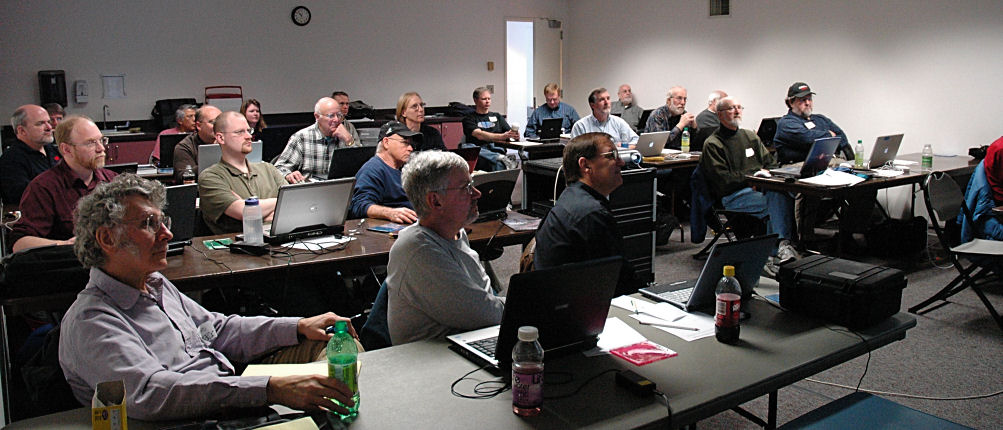|
Electronic imaging of deep sky objects has revolutionized astrophotography. This hands-on workshop focused on deep sky imaging using astronomy CCD cameras and commercial DSLR cameras. About half of the workshop was demonstrations and hands-on labs using images and software provided on the workshop DVD.
This OMSI workshop was sponsored and hosted by Jim Todd.

What Attendees Liked About the Workshop
- All of it
- Everything!
- The whole program was great
- Location, power for laptops, topics
- I liked the noise analysis very much
- Another stupendous workshop, thanks!
- Great conference, learned something in every session
- Everything! Learned a whole bunch of "nuts and bolts" information
- All presentations were great! Really liked Jonís scripting presentation
- Neil Heacockís great presentation; learning about bias frames; AIP4WIN
- Great workshops, lots of variety, in-depth content, great presenting, thanks
- All of it, especially find out there are Photoshop add-ons for automating processing
- Pixel math and statistics, wavelet filter description, FFT description and bias noise
- Good mix of technical, practical, basics and advanced material, it was all very worthwhile
- Oh my goshÖ everything, I donít think there was anything I didnít enjoy or deepen in knowledge
- Pace ok in general, good speakers, great topics, both for building on past years and also for vet, new data
- Enjoyed all the talks. It was very nice to have the presentations and references images files on the DVD. Also, appreciated all the extra reference material
- All presentations were excellent. Picked up many insights and things to try and learn more about. Looking forward to working with AIP4WIN V2.2.0. I will also look into purchasing a scientific CCD such as QSI532ws. Almost started to get a glimmer of understanding FFTs. Then I lost it. I will work on that. I will also look into scripting with MaxIm
|

|
Schedule
- 8:30 to 9:00 am Registration and Installation of Demo Software and Lab files
- 9:00 am Deep Sky Image Processing Lab, David Haworth
- Deep sky imaging equipment
- Measuring image statistics lab
- How the number of stacked images affects image noise lab
- Dark current calibration lab
- Flat frames calibration lab
- Morning Break
|
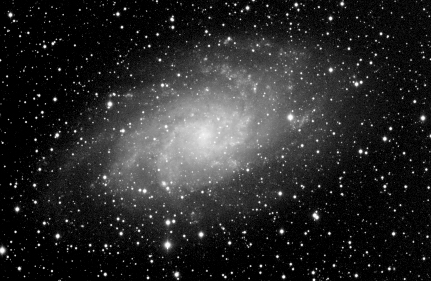
|
- DLSR Imaging For The Visual Observer,
Neil Heacock
- Neil discusses how he images with visual observing equipment which is
not necessarily geared towards astrophotography. His telescope is
Dobsonian and the only things that are an astrophotography equipment
are the Canon DSLR, T-Ring and the eyepiece adapter. Neil talks about
how he uses visual observing equipment to be successful at imaging.
- Lunch on Your Own
|
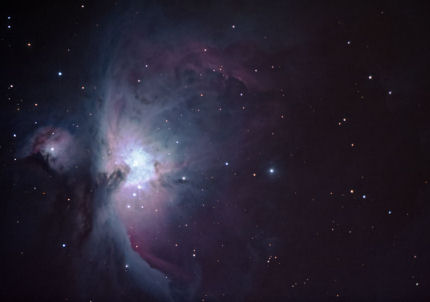
|
- 1:00 pm Five Easy Pieces: Processes to Improve Images,
Richard Berry
After acquisition comes image processing. In this session, I explain and demonstrate five techniques you can use with your images.
- Sigma-Clip Stacking -- to eliminate hot pixels, airplane trails, and tracking glitches
- Gradient Correction -- to fix gradients in urban and suburban sky backgrounds
- Sigmoid Scaling -- to control and compress images with too much dynamic range
- Wavelet Filtering -- to smooth sky backgrounds and enliven image detail
- LCr Color Space -- learn to set luminance and chrominance separately
- Afternoon Break
|
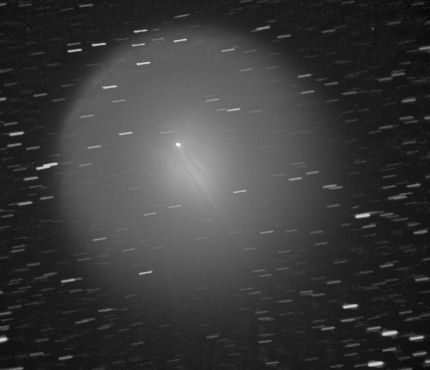
|
- The Underappreciated Bias Frame,
Kevin Nelson, Quantum Scientific Imaging, Inc.
- Bias frames can tell you much about CCDs and CCD cameras. This talk will focus on understanding and characterizing CCD cameras through carefully analyzing bias frames. Topics covered will include:
- Bias frame uniformity
- Measuring and characterizing readout noise
- Assessing sources of noise both on and off the CCD
- Understanding Fourier Transforms (FFTs)
- Using FFTs to detect periodic noise sources
- Lab - How to interpret FFTs
|
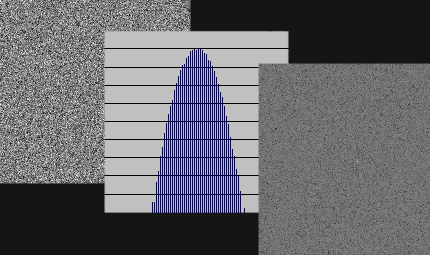
|
- Scripting for Image Acquisition and Processing,
Jon Brewster
It's often nice to just "GOTO" an object and start taking shots. However, sometimes things get tricky. How might you capture an entire lunar eclipse (while sleeping), Any time you have a stunt shot that requires careful planning, it is an opportunity for a scripted session. After you have your data, even from an unscripted session, how many trial processing efforts are explored before you are happy? Much of this can be scripted as well. Your raw data, and your script, then give you a repeatable and incrementally improvable approach, as well as documenting exactly what you did. Topics covered:
- Scripting environments and tools (warning: I'm an ASCOM and MaxImDL fan)
- Example data acquisition runs
- Example processing sessions
|
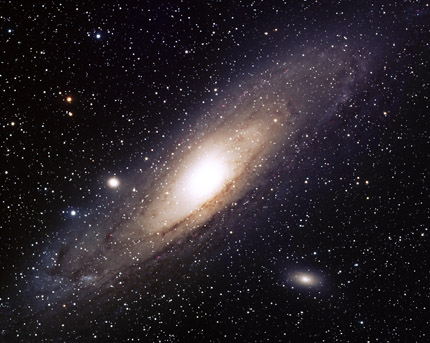
|
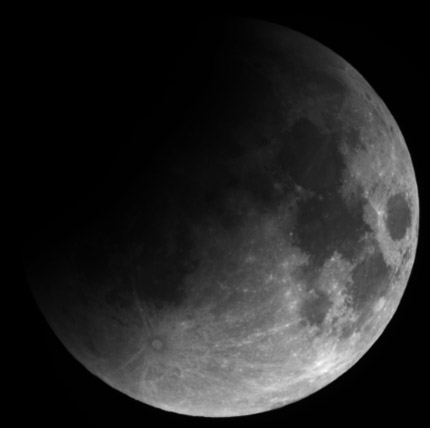
|

|
Speakers

Richard Berry
There is very little that Richard Berry has not done in astronomy; Former editor for Astronomy magazine, co-author of books such as "The CCD Cookbook Camera" and "The Handbook of Astronomical Image Processing" and author of the "Build Your Own Telescope". His talks are always a treat to listen to and a valuable asset to the astronomy community.
|

|
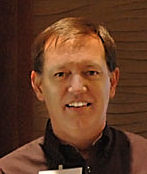
Kevin Nelson, Quantum Scientific Imaging, Inc.
Kevin Nelson is co-founder of Quantum Scientific Imaging, a manufacturer of cooled CCD cameras designed by and for astrophotographers. Kevin is an avid sailor and history buff whose interest in stargazing began with studying the Age of Exploration and celestial navigation. Today, Kevin shares the joys and challenges of imaging the night sky from his backyard with his two young sons.
|

|
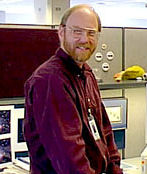
Jon Brewster
Jon Brewster has been an engineer/scientist at Hewlett-Packard for most of his career. He also spent two years working at the Canada France Hawaii Observatory on Mauna Kea Hawaii in the late 80's where he developed a fascination with CCD imaging. He has been an ASCOM software contributor, creating many drivers and tools. Jon has also been involved with helping remote observatory operators to create and control their observatory systems. He currently lives in Monmouth Oregon in a house that is built around his own observatory where he gives frequent star parties and planetarium shows.
|

Neil Heacock
Neil Heacock is an IT professional who moved out of the city for the
first time in 2003. After living in LA, Seattle and Portland, he moved
to somewhat more rural area of Clark County and really saw the stars.
This birthed a strong interest in astronomy which has continued to
grow and develop over the past 5 years. In 2006 Neil began to dabble
in astrophotography and after attending the 2007 Northwest
Astrophotography Conference his imaging stared to mature. Neil
primarily considers himself a visual observer and all of his gear is
visual oriented, but when coupled with his Canon DSLR camera the
images he produces are excellent.
|

|
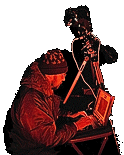
David Haworth
David Haworth enjoys astronomy imaging and processing those images to bring out details that cannot be seen easily by visual observing with the same size optics. David Haworth started astroimaging with a Cookbook CCD camera he built in 1996 and since then has used many types of cameras to image the sky. David wrote Chapter 2: "Afocal Photography with Digital Cameras" in the second edition of "The Art and Science of CCD Astronomy" which was published in December 2005.
|

|
|
Other 2007 - 2008 Conferences
|
![]()
